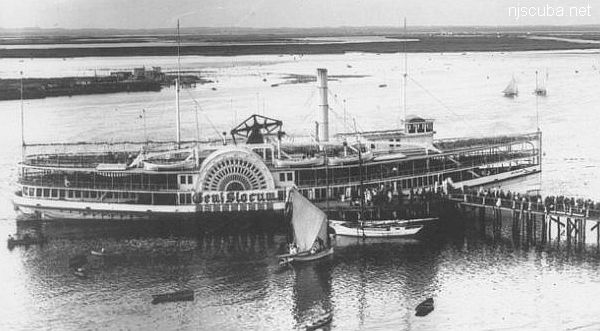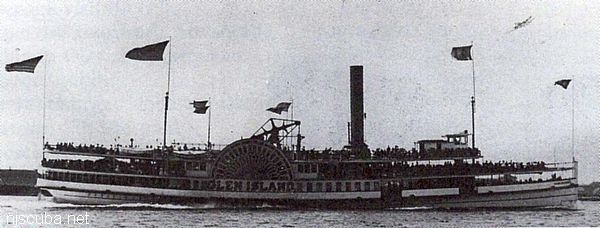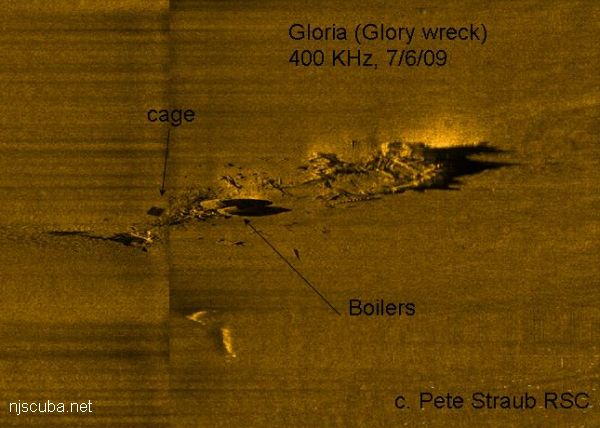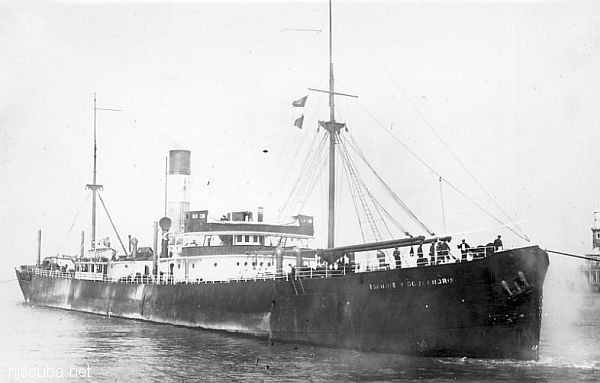
- Type:
- shipwreck, barge, USA
- Built:
- 1891, Brooklyn NY USA, as General Slocum
- Specs:
- ( 235 x 37 ft ) 1284 gross tons, 4 crew
- Sunk:
- Monday December 4, 1911
storm - no casualties - Depth:
- 25 ft ( 30 ft, including mud )
More: General Slocum ...

More: General Slocum ...

outline of wooden hull, paddlewheel
More: Glen Island ...

The "Glory Wreck" is a twisted mass of hull plates and steel spread over a wide area on a sandy bottom. Artifacts are occasionally found: portholes and brass. She is usually a good lobster wreck.
More: Glory ...
A typical smallish schooner barge wreck of unknown origin. Some anchor chain and decking spread out over a small area, with a few smaller pieces way off the main piece. Named after the fishing boat that found the spot.
More: Glory Wreck ...

More: Ioannis P. Goulandris ...